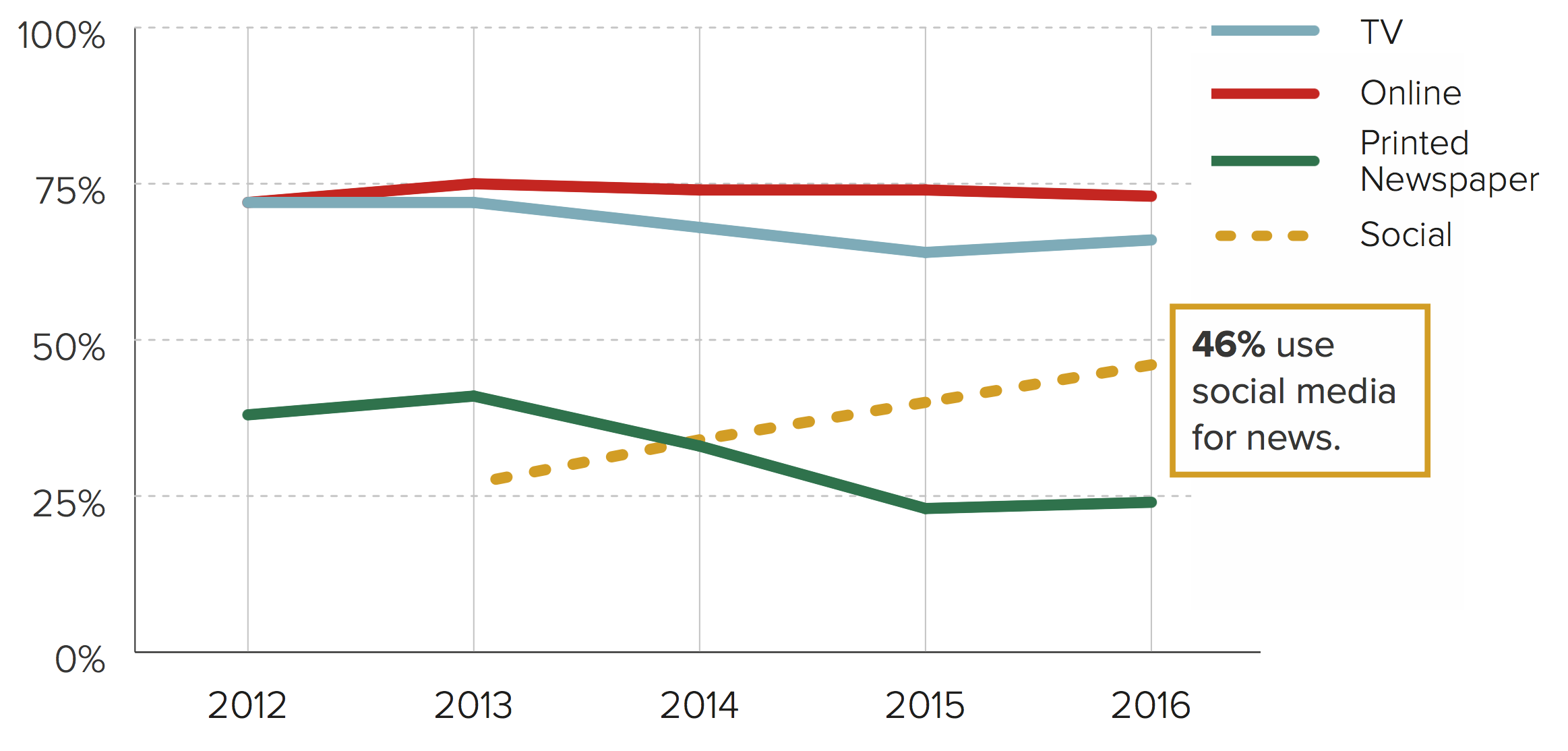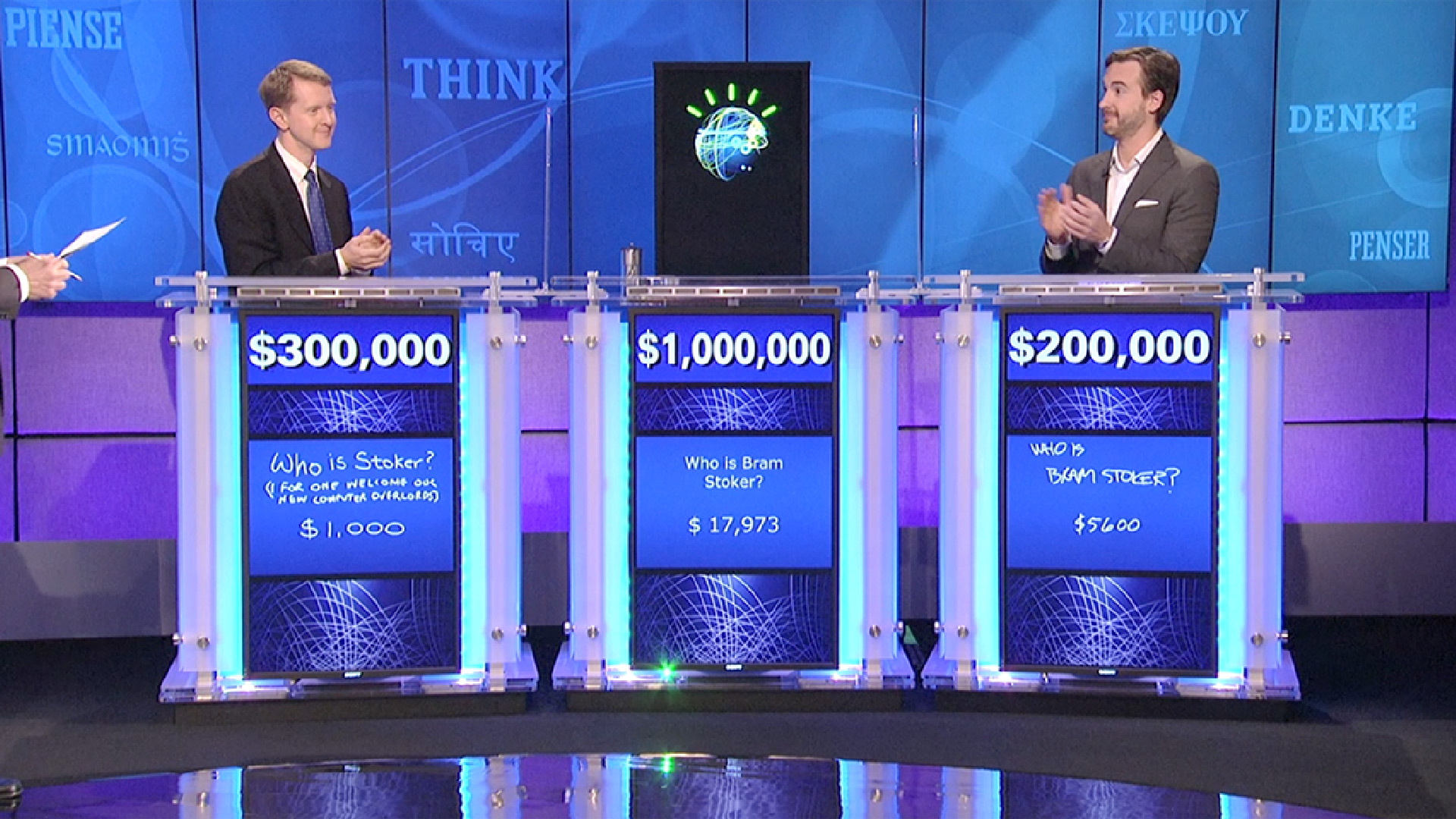 This evening we are hosting Technology companies from Leuven.INC, the Leuven Innovation Networking Circle, at our office. We will talk about trends that shape the media industry and the opportunities for tech companies.
This evening we are hosting Technology companies from Leuven.INC, the Leuven Innovation Networking Circle, at our office. We will talk about trends that shape the media industry and the opportunities for tech companies.
Here are the 7 Trends that are shaping 2016 and the next years.
1. Shift of advertising revenue to tech giants
Ad spending is shifting from print to mobile. Over the past 5 years, newspapers have lost 50 percent of their advertising revenues. In the same time revenues through subscriptions have risen. Thus, making loyal readers more important.
Google and Facebook control 76 percent of the US advertising market; showing strong growth rates still. However, online ads have an efficacy problem. Ad blocking is popular on desktop computers and is now growing most quickly on mobile devices. While mobile ads show huge potential advertisers have to make ads more authentic, entertaining and evoke emotion. French news publishers are making an effort to have visitors turn off blockers to access exclusive material as well.
2. Increasing news consumption via social media

Social media is rapidly becoming the primary source of news. 46 percent of consumers use social media for news. Around one in ten say it is their main source. Facebook is by far the most important network for news.
For young adults (age 18-24) this even higher; 28 percent say it is their main source of news – more than television (24 percent) for the first time.
3. Rapid evolution towards (live) video

Although publishers and platforms are pushing online news video hard for commercial reasons, there is evidence that most consumers are still skeptical. 78 percent say they mostly rely on news in text form because they think it is quicker and more convenient. Pre-roll advertisements make users also turn away from video news content.
Video has still had a huge impact on the media landscape this year. 2016 seems to be the year of video in media. From Snapchat and Facebook Live to Periscope and Instagram Stories. YouTube is the number 2 social platform for news.
4. Conversational interfaces introduce new paradigm
Messaging platforms grow rapidly; with WhatsApp leading the market with over one billion monthly active users. Newsrooms around the world have understood that the new place to reach readers are via messaging apps. Messaging has evolved from simple social conversation to more expressive communication and a channel to consume media.
5. Emotion Measurement is the hot new frontier

It’s not just thumbs up anymore. Facial recognition and emotion interpretation is a hot topic in Silicon Valley with Apple, Facebook, Alphabet’s Google and others investing heavily in those techniques.
In February Facebook rolled out Facebook Reactions globally; giving its users the ability to react to posts in 6 different ways. Reactions help the social network to evaluate the effectiveness of its advertising for example. Limiting the number of reactions to six encourages people to express their emotions more frequently and thus help Facebook’s algorithms.
Apple has acquired the startup Emotient that uses artificial-intelligence technology to read people’s emotions by analyzing their facial expressions. Doctors have previously tested Emotient’s technology to interpret signs of pain among patients that are unable to express themselves.
6. Vloggers are the new rock-starts

Felix Kjellberg, better known as PewDiePie is a Swedish video producer and video blogger. With over 48 million subscribers and 13.5 billion views he is the most subscribed user and also the most viewed channel on YouTube. According to a 2014 survey commissioned by Variety, PewDiePie along with other YouTube influencers are reported to be more influential and popular than mainstream celebrities among US teenagers. In 2016, Time magazine named him one of the “World’s 100 Most Influential People”.
Vloggers have the talent of actually connecting and talking directly to their audience; something most media channels have problems with.
7. Artificial Intelligence will help create better, more personalized experiences

IBM has been developing Watson since the late 90s and Watson is now working together with health care providers to help personalize treatment. Personalized news applications and social media are changing the nature of story selection. Where and when a story appears is decided by an editor but increasingly by computer algorithms. Those algorithms take into account various factors, such as recency and overall popularity, what you have read before, and what your friends have read and shared.
Still, computers are not smart enough yet to measure quality. Facebook has problems fine tuning its “trending” feature algorithm. With false stories, misidentified keywords and celebrity gossip in the place of more serious news, the lack of editors is noticeable.
Find here the whole presentation on SlideShare.
Interested in digital publishing? Subscribe for a weekly newsletter on topics such as AI in media, paid content, and the future of news.
